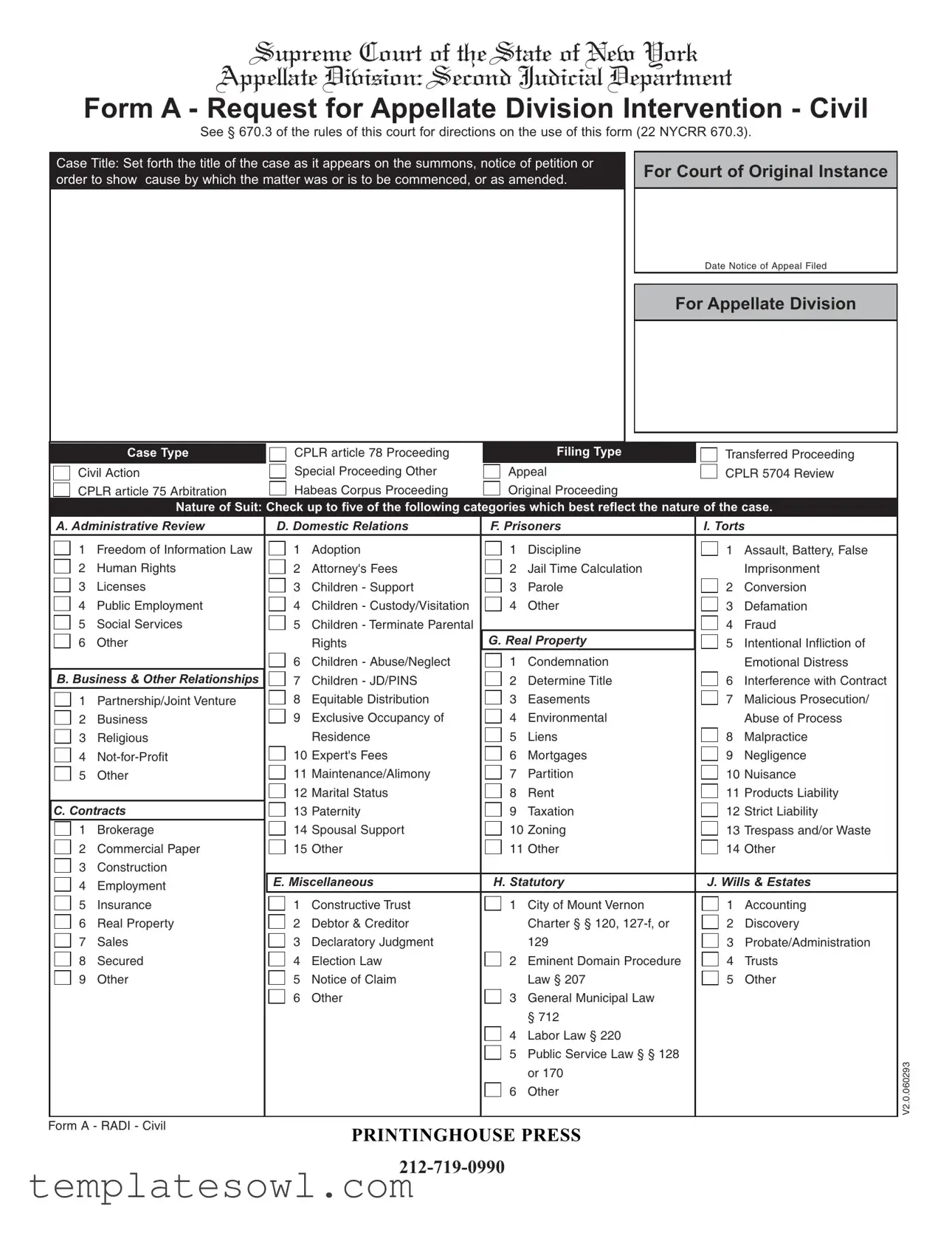What is the purpose of the Request Appellate form?
The Request Appellate form is designed for individuals who want to seek intervention by the Appellate Division of the Supreme Court in New York. This form serves as an official request to appeal a decision made in a lower court. It gathers essential information about the case and helps facilitate the appellate process.
When should I file the Request Appellate form?
The Request Appellate form should be filed after a notice of appeal has been submitted to the lower court. It is crucial to complete this form and submit it within a specific timeframe, as dictated by court rules, to preserve the right to appeal.
What information is required on the form?
The form requires detailed information, including the case title, type of proceeding, and the specific nature of the suit. You will also need to identify the paper you are appealing from, provide party information, and outline the issues you wish to raise on appeal. Make sure to read through the form carefully to understand all required fields.
How do I know whether my appeal is perfect or unperfected?
An appeal is considered unperfected if the necessary documents and steps have not been completed as required by the court's procedures. You can assess your appeal’s status by reviewing your submission history and checking if all procedural requirements have been fulfilled.
Can multiple parties appeal using the same form?
No, each party involved in the case should have their respective Request Appellate form. However, you can refer to multiple parties in your submission and indicate their status both in the original court and in the Appellate Division.
What happens if I miss the filing deadline for the Request Appellate form?
If you miss the deadline, you may lose your right to appeal. The Appellate Division has strict time limits, and late filings may not be accepted unless there are exceptional circumstances. It's advisable to file as soon as possible and to seek legal advice if you’re concerned about a missed deadline.
Is there a fee associated with filing the Request Appellate form?
Yes, there is typically a filing fee associated with submitting the Request Appellate form. The fee amount can vary based on the type of appeal and the specific rules of the court. Make sure to verify the exact fees applicable to your case by checking with the court or its official website.
Can I represent myself when filing this form?
Yes, you can represent yourself in an appellate matter, which is known as "pro se" representation. If you choose to do so, you must complete the appropriate sections on the form to indicate your self-representation status and provide your contact information accurately.
What should I include in the description of the appeal?
The description of the appeal should provide a concise summary of the order or judgment being appealed. Include specifics such as what relief you are seeking and whether the initial motion was granted or denied. If applicable, also mention the amount at stake in money judgments.
How do I submit the Request Appellate form?
The Request Appellate form should be submitted to the Appellate Division along with any required supporting documents. Ensure that you follow the specified order in which documents must be submitted. Check with the court’s website for submission options, including in-person or electronic filing.






